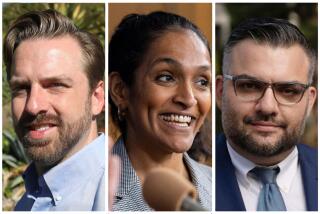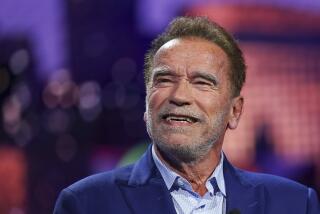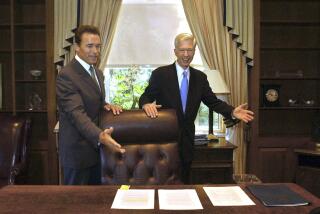William Donald Schaefer dies at 89; Maryland’s dominant political figure for a half-century
William Donald Schaefer, the dominant political figure of the last half-century of Maryland history, died Monday after a “do-it-now” career that changed the face of Baltimore while bringing a burst of energy to the city he loved. He was 89.
Schaefer, who had recently been treated for pneumonia, died at a retirement home in Catonsville, Md.
In four terms as mayor and two as governor, Schaefer was a champion of big projects that transformed Baltimore: the Harborplace retail and restaurant complex, Oriole Park baseball stadium at Camden Yards, the National Aquarium, a convention center and a light rail. Yet he was also intensely involved with the mundane details of city neighborhoods.
Flamboyant but private, irascible but sentimental, quirky but hard-headed, Schaefer won immense and enduring popularity among voters for his blunt talk and passionate dedication to public service. He prided himself on saying what ordinary people were thinking — even when it went counter to prevailing political norms — but his outspokenness would eventually contribute to his ouster as comptroller in 2006.
As mayor, he was a tireless promoter of Baltimore. As governor, he was a builder whose second term soured in a wrenching fiscal crisis. By the time he left office, a series of gaffes — abusive letters to critical private citizens and his use of a derogatory term to describe Maryland’s Eastern Shore — had dimmed his popularity.
In his final office, state comptroller, which he won in 1998 after four years of misery in retirement, he acted as an unofficial state gadfly — scolding governors and lesser officials and igniting controversies. But away from the spotlight, the comptroller also moved effectively to restore the reputation of the state’s scandal-ridden pension system.
A lifelong Democrat, Schaefer played by his own political rules, supporting Republicans over fellow party members when it suited him and holding to a fundamental belief that government can be a positive force in people’s lives.
While he was a serious, hands-on leader who immersed himself in policy details, Schaefer was also a master of goofy theatrics. Most famously, in an act of choreographed buffoonery, he donned an 1890s bathing suit and waded into the seal pool of the National Aquarium to atone for the city’s failure to open the tourist attraction on schedule.
Schaefer, who never married, had interactions with women that were contradictory and sometimes controversial. Pro-feminist in deeds, he was ahead of his time in putting strong, intelligent women in positions of great responsibility. At the same time, he showed an old-fashioned disdain for political correctness by routinely referring to his female employees and supporters as his “little girls.”
William Donald Schaefer was born Nov. 2, 1921, in Baltimore. A graduate of Baltimore City College and the University of Baltimore’s law school, he served in the Army during World War II, supervising military hospitals in Europe.
Schaefer was elected to the Baltimore City Council in 1955. At first he concentrated on such basic issues as home rehabilitation, trash collection and school maintenance. Later, as chairman of the Judiciary Committee, he shepherded through the council housing and urban renewal legislation.
In 1971, Schaefer ran for mayor and won 84% of the vote. He quickly established himself as Baltimore’s No. 1 cheerleader — even though there was little to cheer about. The city was in the throes of a transformation — accelerated by rioting after the assassination of the Rev. Martin Luther King Jr. in 1968 — from a middle-class ethnic European stronghold to an impoverished urban center with a black majority. Block-busting and white flight were devastating its neighborhoods, while a corporate exodus was bleeding away the employment base.
Schaefer conducted a frenzied campaign of boosterism. He encouraged “urban homesteading” in once-blighted neighborhoods and relentlessly promoted tourism. It was during these years that “Do It Now” became the catchphrase for Schaefer’s approach to governing.
He used federal funding in the 1970s for summer jobs programs and public works projects and persuaded Hyatt to build a hotel that became a centerpiece for future development in downtown Baltimore. He also secured state funding for a convention center. They were soon followed by the National Aquarium and a retail and restaurant complex along the edge of the Inner Harbor called Harborplace. When it opened in 1980, Harborplace was hailed as a model of a new American urban center.
As his statewide popularity soared, Schaefer agreed to run for governor in 1986, winning 82% of the vote. As governor he spearheaded an initiative to construct a future football stadium as well as Oriole Park at Camden Yards, which was hailed as a model of ballpark architecture. But his popularity waned in the face of controversies and a severe budget crunch that forced painful spending cuts and tax increases.
Schaefer has no survivors.
More to Read
Start your day right
Sign up for Essential California for the L.A. Times biggest news, features and recommendations in your inbox six days a week.
You may occasionally receive promotional content from the Los Angeles Times.






